Tucana constellation is located in the southern sky. It represents the toucan, a bird with a large and colorful bill native to Central and South America. This constellation was not created by Greek astronomer Claudius Ptolemy but by Petrus Plancius, a Dutch astronomer.
Since Tucana is not one of the 48 Greek constellations in the Almagest, there are no mythological stories related to it. Petrus Plancius conceived Tucana from the observational data of two Dutch navigators in the 16th century. These navigators are Frederick de Houtman and Pieter Dirkszoon Keyser.
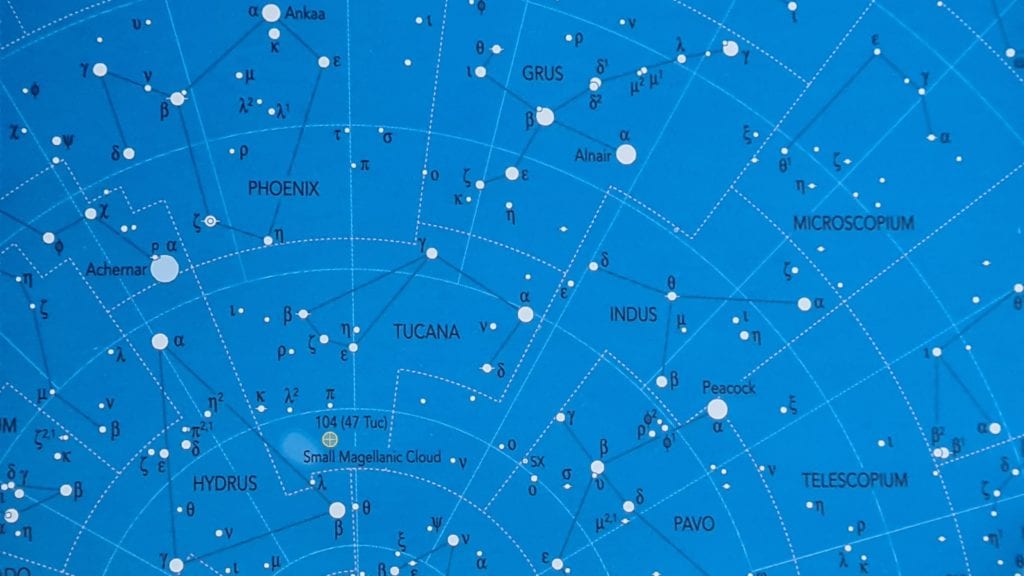
Tucana remains as an official constellation recognized by the International Astronomical Union (IAU) today. It is the 48th largest constellation out of the 88 that we have. It covers an area of 295 square degrees or about 0.71% of our night sky.
Tucana Origins
In 1930, Belgian astronomer Eugène Delporte set the boundaries of Tucana and enclosed it in a 10-segment polygon. The IAU adopts the abbreviation Tuc for and the genitive Tucanae for this constellation.
The stars in Tucana are rather faint, as only one of them is brighter than the third magnitude. Its brightest star, Alpha Tucanae, is 2.87 in apparent magnitude. The star designated Beta Tucanae is a system that has six members. Gamma Tucanae is not brighter either but is faintly visible to our naked eye. Kappa Tucanae is made up of two binaries, totaling four members in the said star system. At least ten stars in this constellation have exoplanets.
The dwarf galaxy called Small Magellanic Cloud (SMC) is mostly located in Tucana, while some parts of it extend to the Hydrus constellation. Located in SMC is the open cluster NGC 346. Another star cluster in Tucana is the bright globular cluster of 47 Tucanae. It is actually considered the second-brightest of its kind after Omega Centauri. The Tucana Dwarf is also in this constellation.
Twelve southern constellations were made from the observations of De Houtman and Keyser. They are:
- Apus (the Bird of Paradise)
- Chamaeleon (the Chameleon)
- Dorado (the Swordfish)
- Grus (the Crane)
- Hydrus (the Male Water Snake)
- Indus (the Indian)
- Musca (the Fly)
- Pavo (the Peacock)
- Phoenix (the Phoenix)
- Triangulum Australe (the Southern Triangle)
- Tucana (the Toucan)
- Volans (the Flying Fish)
Most of them became part of the Bayer Family of constellations, except for Triangulum Australe which is in Hercules Family. The group was named after Johann Bayer because their first depiction in a star atlas was in his Uranometria, in 1603.
What’s In A Name?
Petrus Plancius gave the name Tucana to this constellation. Its first appearance was in a celestial globe in 1598. He published it together with Flemish cartographer Jodocus Hondius. Johann Bayer also depicted this constellation as the south American bird toucan in his Uranometria.
When De Houtman made a star catalogue in 1603, he referred to this constellation as Den Indiaenschen Exster, op Indies Lang ghenaemt (the Indian magpie, named Lang in the Indies). He was probably referring to a hornbill, another bird in the East Indies.
The English called this constellation Brasilian Pye around the 17th century. Other names associated with it are Pica Indica and Anser Americanus (American Goose).
Quick Check: How Tucana Came to Be
Tucana the Toucan was made when explorers began sailing towards the south. Before that, not much was known about the southern sky as it was not visible to the ancient Babylonians, Greeks, Romans, and other observers north of the equator.
Frederick de Houtman and Pieter Dirkszoon Keyser were part of the First Dutch Expedition to Indonesia (First Dutch Expedition to Nusantara) in the years 1595 to 1597. A total of 12 constellations were made from their observations. Plancius named them after the animals that were mentioned in books and in traveller’s notes.
The 16th and 17th century saw a period which became known as the “Golden Age of Netherlandish cartography.” The Dutch were the leaders in the field of cartography or the art and science of making maps. Plancius, de Houtman, and Keyser were some of the notable names, if not the most notable, in the Age of Discovery.
Many years later in 1756, French astronomer Nicolas Louis de Lacaille gave Bayer designations to the stars of Tucana.
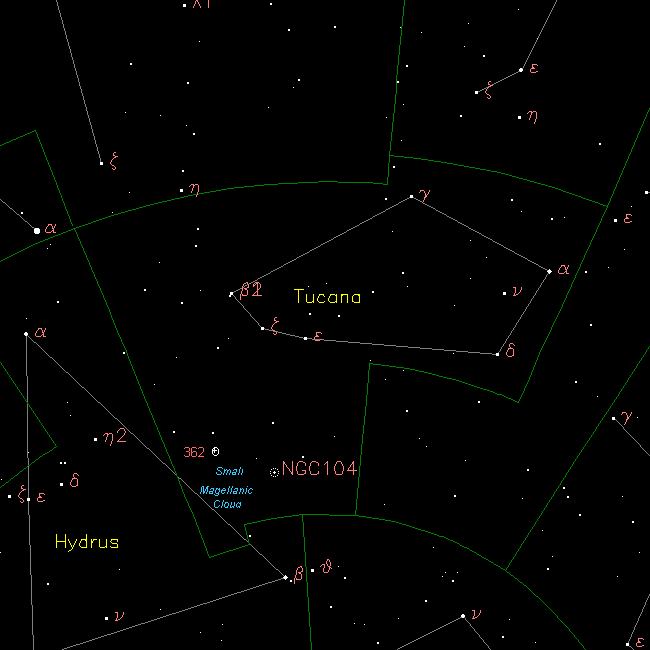
What Does Tucana Look Like?
Tucana is primarily outlined by six stars. Arranged in brightness, the stars are Alpha Tucanae, Gamma Tucanae, Zeta Tucanae, Beta Tucanae, Epsilon Tucanae, and Delta Tucanae. The arrangement of these stars is sometimes compared to that of a kite.
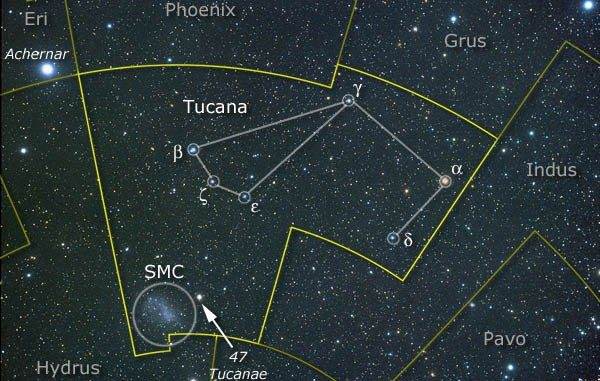
There is another way of connecting its stars, depending on preference. In this version, the beak of the celestial toucan is usually depicted by the line (or above the line) connecting Alpha and Gamma Tucanae. Its eye is marked by Gamma Tucanae.
A different way of interpreting the outline is looking at the triangle-like shape as the bird’s prominent beak. We can use the brightest star in the Eridanus constellation, Achernar, as a reference to find it. Beta and Gamma Tucanae are some of the stars of its bill while Alpha and Delta Tucanae make up its tail.
Where To See the Tucana Constellation
Tucana is located in the southern part of the celestial sphere, particularly in the first quadrant (SQ1). It lies at 0 hour right ascension and -60° declination. From here on Earth, we can see it if we are at latitudes between +25° and −90°.
Observers living in areas along the mid-northern latitudes will not be able to see the celestial toucan. And since Tucana is a deep southern constellation, it is circumpolar in places south of -50°.
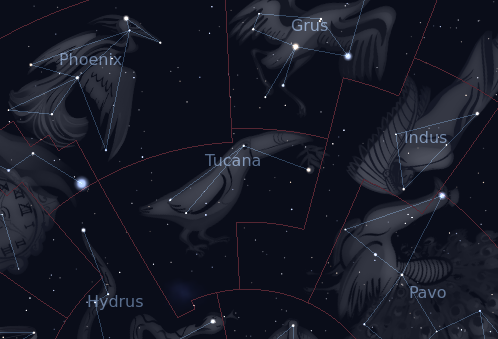
Tucana and Its Neighbors
Tucana is surrounded by five other southern constellations. To its north are the birds Phoenix and Grus while Octans is located below it. Other constellations around its borders are Indus, Hydrus, and Eridanus in the upper corner.
As we can notice, there are four birds located near each other in the southern hemisphere, Grus, Phoenix, Pavo, and Tucana itself. These wonderful creatures are often called the “Southern Birds.”
When To See the Tucana Constellation
The time to see Tucana in the sky also depends on our location. Remember that it is invisible in some parts of the northern hemisphere. For the places that it is visible, we can get a great view of it in November at about 9 pm.
Since it is circumpolar in the far southern sky, people who want to observe from those locations can see it all year long.
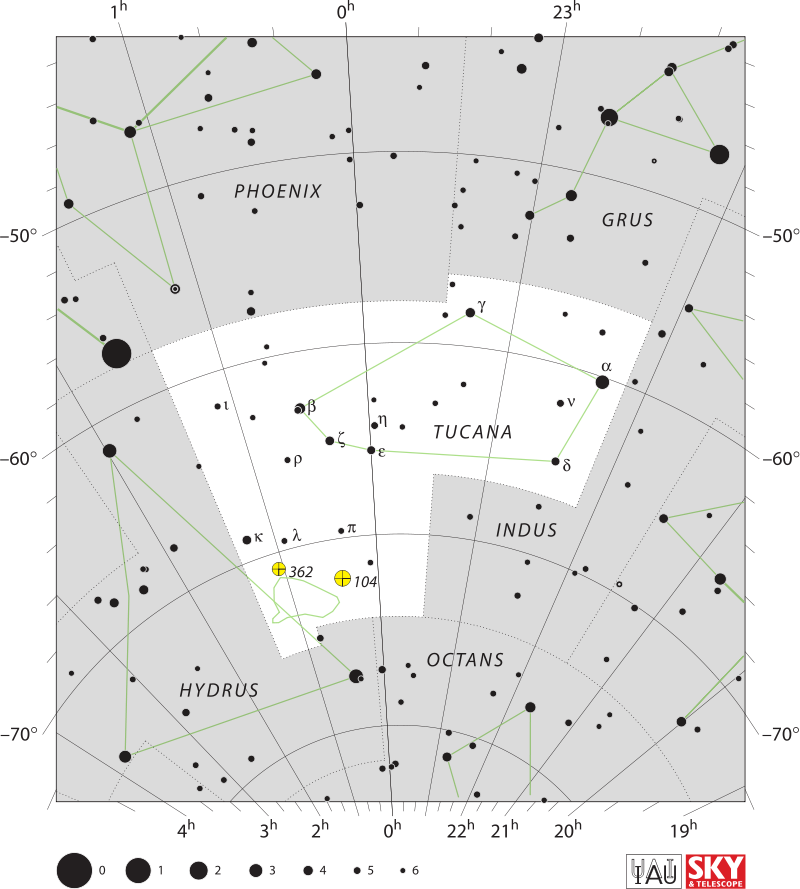
Tucana and Its Stars
Nicolas Louis de Lacaille assigned the Greek letters Alpha to Rho in Tucana when he gave them the Bayer designations. Benjamin Gould assigned Xi Tucanae to a star which was previously omitted by Lacaille. This was not a star though, as it is the bright globular cluster that we now identify as 47 Tucanae.
Tucana is not made up of bright stars. A lot of them are within the third-magnitude range and the others are even fainter. There are notable multiple star systems in this constellation. Planetary systems are present too. Two stars in Tucana were given IAU-approved names. They are the stars Poerava and Emiw.
Alpha Tucanae (α Tucanae)
Alpha Tucanae is the celestial toucan’s brightest star. It is a spectroscopic binary with an apparent visual magnitude of 2.86. The primary is a giant star that belongs in the stellar class K3 III. The pair, located 200 light-years distant from us, has an orbital period of 11.5 years.
Beta Tucanae (β Tucanae)
Beta Tucanae is a multiple-star system made up of six stars. It is made up of three binaries designated β¹, β2, and β³. Its two brightest components, β¹ and β2, are 27 arcseconds apart. The Beta Tucanae system is estimated to be 140 light-years away from Earth.
- β¹ Tucanae
β¹ Tucanae is 4.36 in apparent magnitude. It belongs in the stellar class B9V. It has an M-type star companion whose apparent magnitude is 13.5
- β2 Tucanae
β2 Tucanae is an A-type star with a spectral type A2V/A7V. Its apparent magnitude is 4.53. Its companion is a 6th-magnitude star.
- β³ Tucanae
β³ Tucanae is a binary star that is farther from the first two pairs. The stars in this system have +5.8 and +6.0 in apparent magnitudes They are both A-type stars in the main sequence.
Gamma Tucanae (γ Tucanae)
Gamma Tucanae is one of the main stars in the constellation. It is an F-type star whose apparent magnitude is 3.99. The stellar classification of this star somewhat differs in different sources. It was given F1 III, F3 IV/V, or F4 V. It is believed that it has a G-type companion. Gamma Tucanae is roughly 75 light-years from our planet.
Delta Tucanae (δ Tucanae)
Delta Tucanae is a binary with an overall apparent magnitude of 4.48. The primary component is oblate in shape because it is a rapid rotator. Its stellar classification is B9 Vn. The secondary component is a fainter star that belongs in the G0 V Fe−2 classification. Delta Tucanae is 250 light-years from our Sun.
Epsilon Tucanae (ε Tucanae)
Epsilon Tucanae is a B-type star that has an apparent magnitude of 4.50. Its stellar classification is either B8 V or B9 IV. It is a Be star that spins rapidly. Its estimated distance from Earth is 373 light-years.
Zeta Tucanae (ζ Tucanae)
Zeta Tucanae has an apparent magnitude of 4.23, making it the third brightest star in Tucan. It is a main-sequence star with the spectral classification F9.5V. It is nearly as massive as the Sun. Astronomers believe that this star has a debris disk around it. Zeta Tucanae is approximately 28 light-years away from us.
Eta Tucanae (η Tucanae)
Eta Tucanae is an A-type star with an apparent magnitude of 5.00. It is in the stellar class A1V. Its radius is 1.8 times that of the Sun’s radius. It is nearly twice as massive and is radiating at a luminosity of about 23 Suns. It is roughly 154 light-years away from our planet.
Theta Tucanae (θ Tucanae)
Theta Tucanae is a variable star whose mean apparent magnitude is +6.11. It is a Delta Scuti variable. This subgiant is in the spectral class A7IV. It is about 423 light-years from us.
Iota Tucanae (ι Tucanae)
Iota Tucanae is a yellow star that is located 304 light-years away from us. It belongs in the spectral type G5 III. This semiregular variable is 2.2 times as massive as the Sun. Its radius is about 11 times solar and is more luminous by roughly 65 times. Though it is bigger, it is estimated to be 1.69 billion years old only, much younger than our Sun.
Kappa Tucanae (κ Tucanae)
Kappa Tucanae is made up of two binary pairs or four stars in its system. The combined apparent magnitude of this quadruple is +4.25 or +4.86. The first pair has an F-type star of 5.0 apparent magnitude. Its companion is fainter and orbits the primary in a period of 857 years.
The second binary is much fainter than the other pair. It takes them 86.2 years to orbit each other. The Kappa Tucanae system is 68 light-years away from us.
Nu Tucanae (ν Tucanae)
Nu Tucanae is an M-type star. This red giant has the stellar classification M4 III. It is a slow irregular variable whose apparent magnitude varies between 4.75 to 4.93. The radius of this star is about 49 times that of the Sun’s. It is also more luminous by about 400 times. Nu Tucanae is approximately 290 light-years distant from our Sun.
Pi Tucanae (π Tucanae)
Pi Tucanae is a blue star with a visual companion nearby. It is +5.49 in apparent magnitude. The stellar classification of the primary star is B9 V. This fast-spinning star is 2.8 times as massive as our Sun. The companion star, which may or may not be a physical pair to the other, is about 10.1 in magnitude. Pi Tucanae is roughly 317 light-years away from Earth.
Rho Tucanae (ρ Tucanae)
Rho Tucanae is a spectroscopic binary. The primary star in this system is a main-sequence star. It is in the stellar class F6 V. This F-type star has a mass that is about 1.66 times the solar mass. The secondary star is less massive than it, as it only has 33% of the mass of the Sun. The two components have an orbital period of 4.82 days. Their combined apparent magnitude is 5.38. The Rho Tucanae star system is approximately 134 light-years distant from us.
Poerava (HD 221287)
Poerava is the official name given to the star HD 221287. Its apparent magnitude is 7.82 so it is not visible to the naked eye. It is a main-sequence star with the stellar classification F7V. This has a radius that is around 1.18 times the solar radius. It is also more massive by 1.20 times.
Poerava lies at a distance of roughly 183 light-years away from us. An exoplanet was discovered around this star. It is designated HD 221287 b and given the formal name Pipitea.
Emiw (HD 7199)
HD 7199, or Emiw, is another star in Tucana given an official name approved by the IAU. It is an orange star whose stellar classification is K1IV. Its apparent magnitude is 8.06. It is less massive than the Sun.
Emiw is located 118 light-years from us. It has a planetary system where the exoplanet HD 7199 b was discovered. This planet was given the name Hairu.
HD 4308
HD 4308 is a solitary star that is about 6.54 in apparent magnitude. This yellow-hued star is underabundant in iron, as indicated in its stellar classification G6VFe-0.9. Its radius is 1.04 times the solar radius but its mass is only 95% that of the Sun’s. It hosts an exoplanet called HD 4308 b. The planetary system is about 72 light-years away from Earth.
HD 219077
HD 219077 is a G-type star with an apparent magnitude of 6.12. Its stellar classification is G8 V. This slow-spinning star is 1.05 times as massive as the Sun and radiates 2.66 times the solar luminosity. It is approximately 95 light-years from the Earth. It hosts the planet HD 219077 b.
HD 215497
HD 215497 is an orange star with an apparent magnitude of 8.96. This main-sequence star has the stellar classification K3V. It is less massive than our Sun but is more abundant in heavier elements. Its estimated distance is 132 light-years from us. This star has a planetary system that hosts two exoplanets designated HD 215497 b and c.
Planets in the Toucan’s Constellation
More than ten stars in the constellation of Tucana host planets. Some of them have at least two members. That number, just like in other constellations, is expected to increase as more exoplanets are discovered. Aside from the ones below, other planets in Tucana include HD 224538 b, HD 219666 b, HATS-30 b, HATS-34 b, and WASP-91 b.
HD 221287 b
HD 221287 b is an exoplanet with a mass of 3.09 Jupiters. It orbits the white-hued star Poerava in a period of 456.1 days. Because of that, it is also designated Poerava b. This gas giant is in the habitable zone. It was discovered in 2007 through the radial velocity method. The official name given to HD 221287 b is Pipitea.
HD 7199 b
HD 7199 b is another exoplanet in Tucana that lies in the habitable zone. It is a gas giant that is 1.36 AU from the star Emiw. Its mass equates to 0.27 Jupiters and its orbital period is 1.7 years. Other designations for this planet are Hairu and HIP 5529 b.
HD 4308 b
HD 4308 b is a gas giant that has a mass of 15.8915 Earths. This Neptune-like planet is 0.12 AU from the yellow star HD 4308. It orbits the said star in a period of 15.6 days. It was discovered in 2005.
HD 219077 b
HD 219077 b is a large planet that is 10.39 times as massive as Jupiter. It is a gas giant that orbits a yellow-hued star in a period of 15.1 years. It was detected using the radial velocity method in 2012.
HD 215497 b
HD 215497 b is one of the two exoplanets around the K-type star HD 215497. This gas giant has a size comparable to Neptune. Its size equates to 6.3566 Earths. It is 0.05 AU from the star and orbits it in 3.9 days.
HD 215497 c
HD 215497 c is another exoplanet in HD 215497. It lies in the habitable zone. This gas giant completes an orbit in a period of 1.6 years. It has a mass of 0.33 Jupiters. The discovery of this exoplanet was in 2009.
HD 213885 b
HD 213885 b is unlike any planet in our solar system. It is considered a super-Earth, an exoplanet whose size is larger than Earth but smaller than Neptune. This exoplanet probably has a rocky surface. Its mass equals 8.83 Earths. It only takes one day for it to orbit its G-type star.
HD 213885 c
HD 213885 c is another exoplanet in the HD 213885 planetary system, about 156 light-years away. Its size is comparable to Neptune. It has a mass of 19.95 Earths and an orbital period of 4.8 days. This Neptune-like exoplanet was discovered in 2019.
HD 222076 b
HD 222076 b is a giant planet that is primarily made up of gas. It is much larger than our planet, Earth, and its mass equates to 1.56 Jupiters. Its orbital period is about 2.4 years. This gas giant was discovered in 2016.
Deep-sky Objects in Tucana Constellation
Tucana is home to the famous deep-sky objects 47 Tucanae and the Small Magellanic Cloud, a dwarf galaxy. Because of the presence of this Milky Way satellite galaxy, the constellation has an array of nebulae, star clusters, and galaxies. Some examples are the emission nebula NGC 248, the globular cluster NGC 362, the open cluster NGC 290, and the barred spiral galaxy NGC 7408.
No Messier object was identified in Tucana.
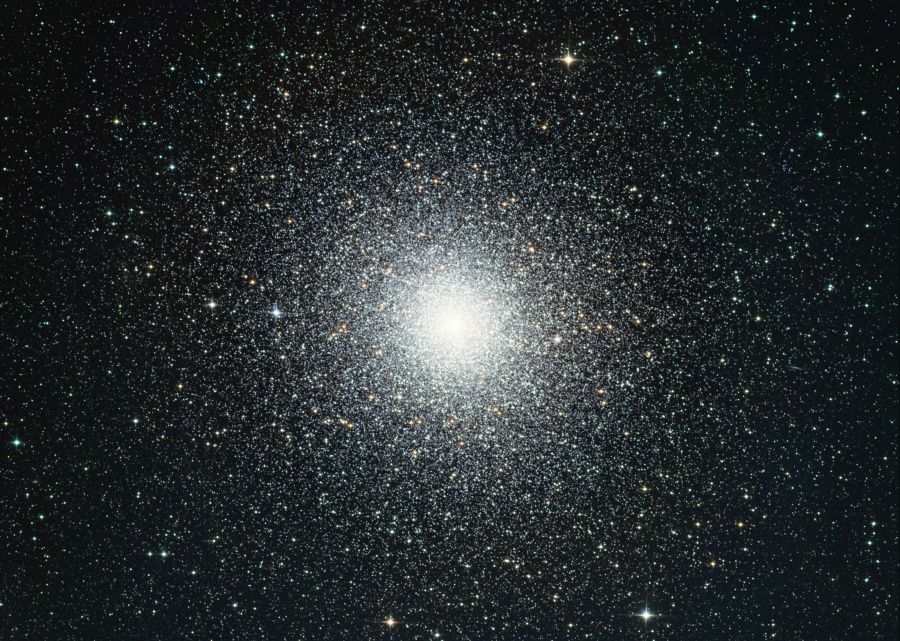
47 Tucanae
47 Tucanae is also called NGC 104. It is considered the second brightest globular cluster that we can see in our night sky. We can see it with the naked eye as its apparent magnitude is 4.1. The cluster is 120 light-years across with more or less ten thousand stars. Nicolas-Louis de Lacaille recorded it around 1751. This bright celestial object is about 13,000 light-years away from Earth.
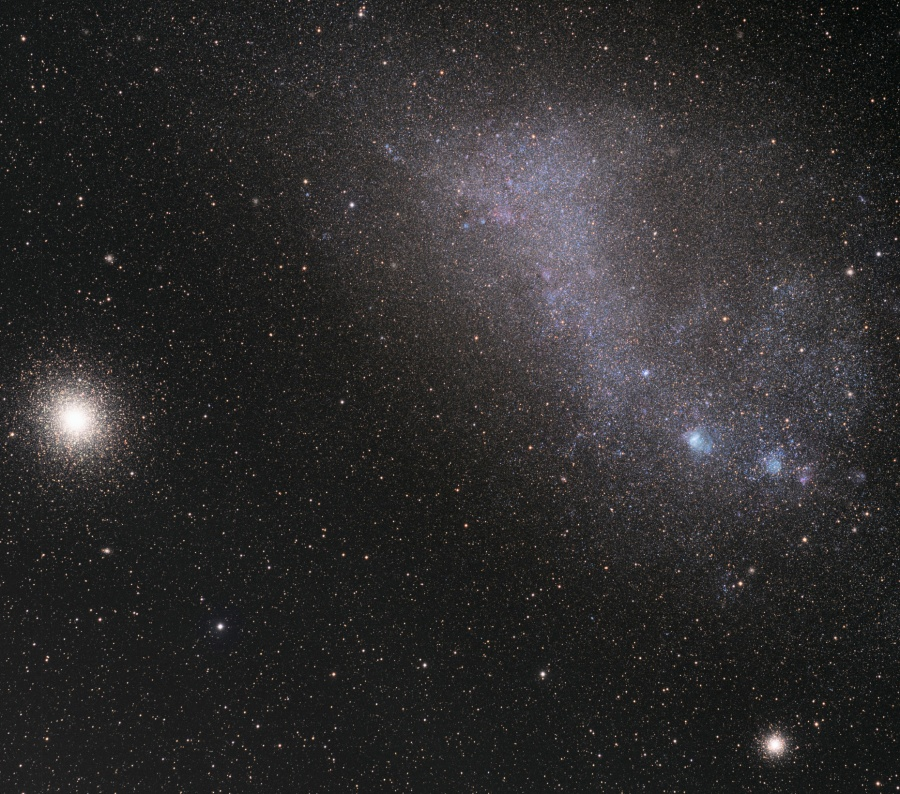
Small Magellanic Cloud
The Small Magellanic Cloud (SMC) is an irregular galaxy that stretches around 15,000 light-years or so. It is part of the Local Group together with the Large Magellanic Cloud. This deep-sky object is only visible to observers in the southern hemisphere and some parts in the north.
The SMC is roughly 210,000 light-years away from us. Despite that, it is still visible to the naked eye because its apparent magnitude is 2.7. The two Clouds of Magellan are connected by a bridge of gas. They were named after the Portuguese explorer Ferdinand Magellan.

Tucana Dwarf
The Tucana Dwarf galaxy is an isolated dwarf galaxy. It is populated with very old stars since no star formation takes place there. This dwarf spheroidal galaxy is an interesting subject that can help astronomers understand the Local Group more.
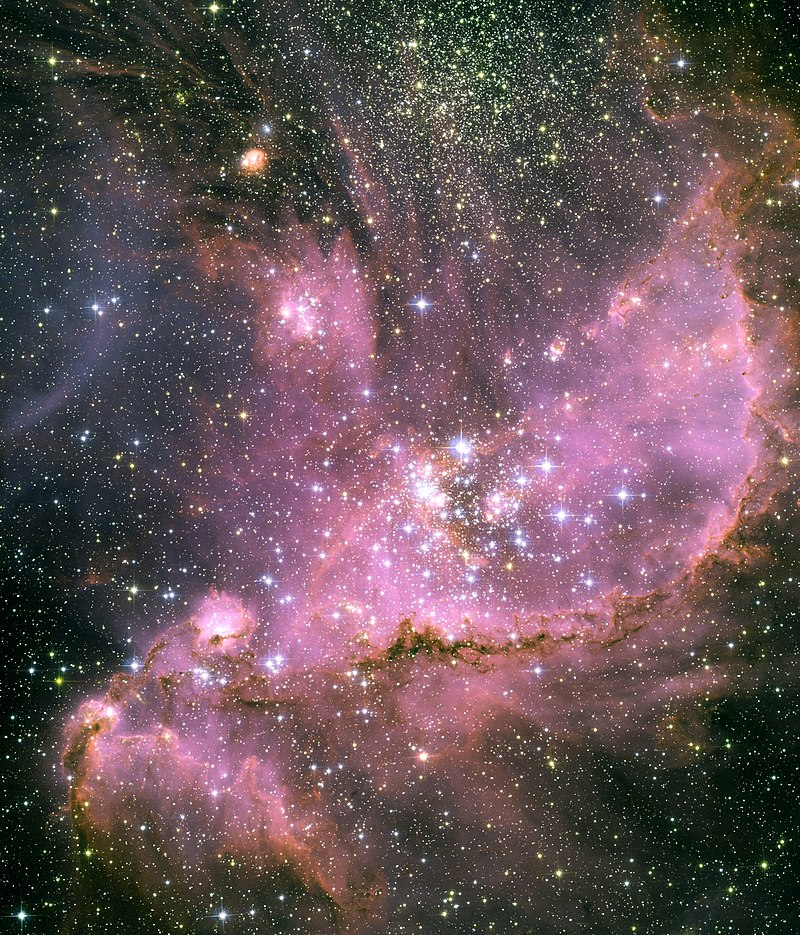
NGC 346
NGC 346 is a star-forming region in the Small Magellanic Cloud. This region spans roughly 200 light-years across. It is a stellar nursery that is home to some 2,500 infant stars.
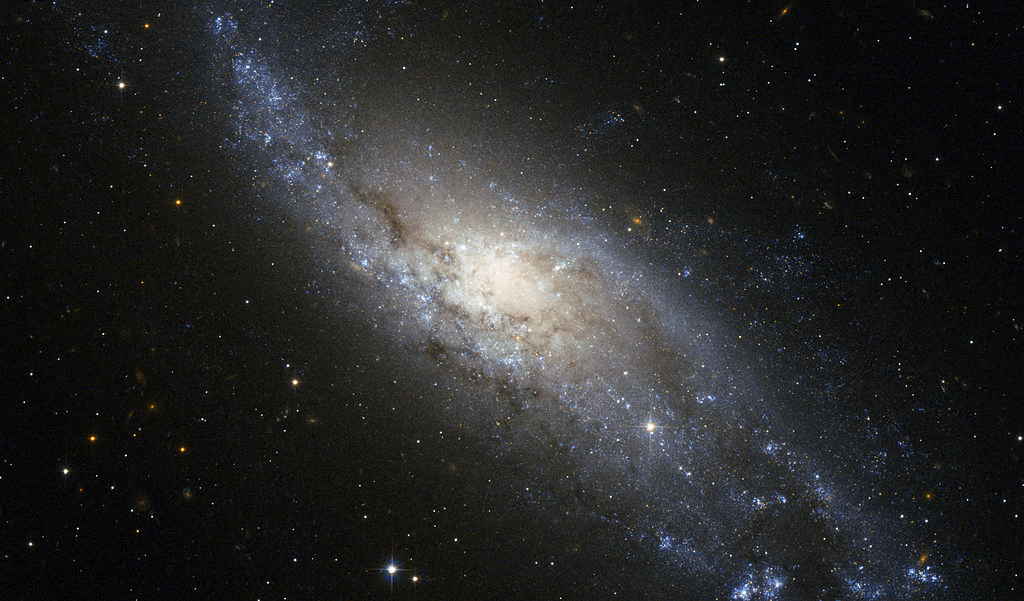
NGC 406
NGC 406 resembles the Whirlpool Galaxy. The arms of this spiral galaxy are home to many young and massive stars. Its center is populated with older stars. English astronomer John Herschel discovered it in 1834. NGC 406 is estimated to be 60 000 light-years across. It lies at a distance of 65 million light-years from us.

NGC 265
NGC 265 is another open cluster in Tucana. It is about 65 light-years in diameter. This cluster is in the Small Magellanic Cloud. It lies at a distance of 200,000 light-years from us.